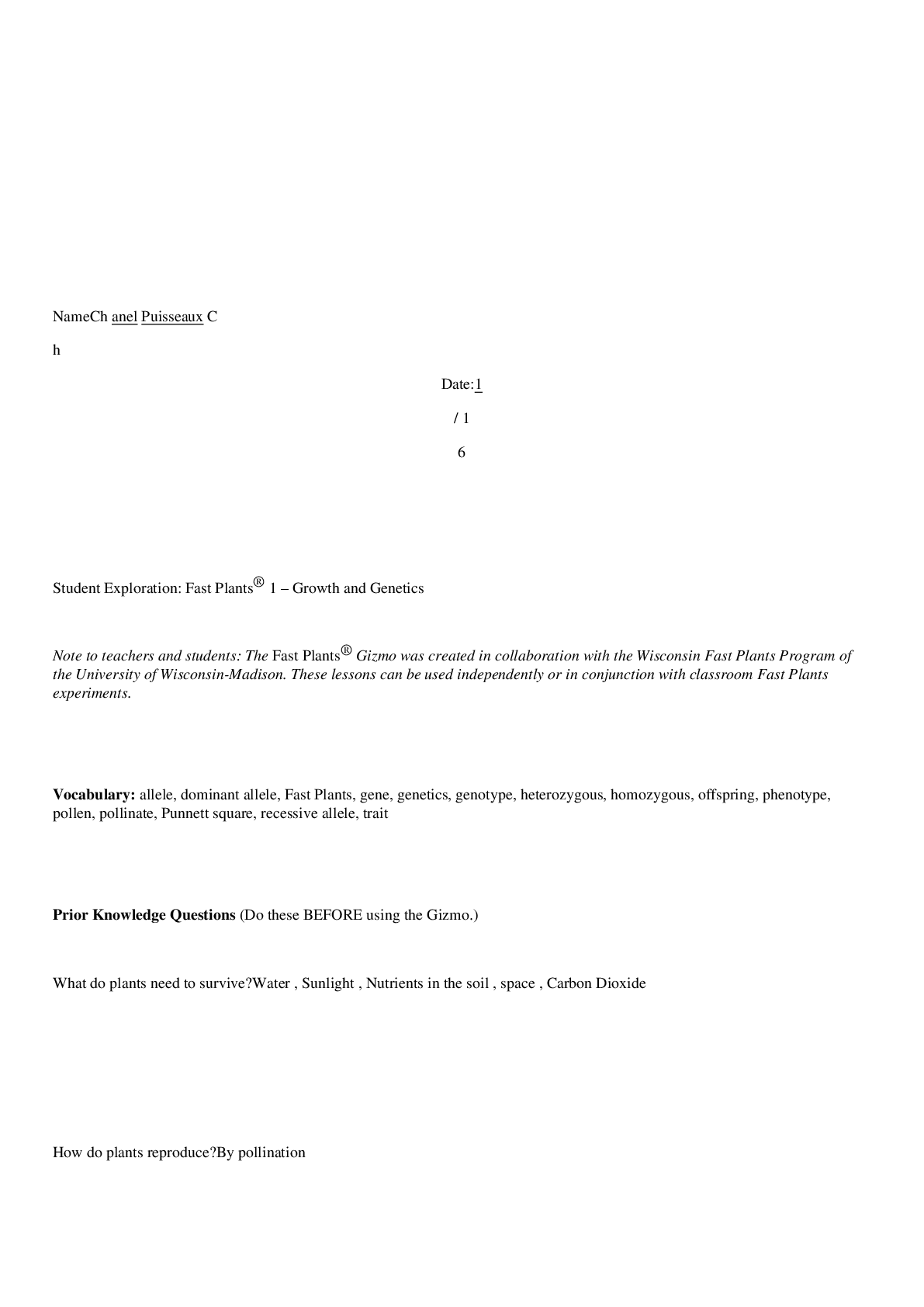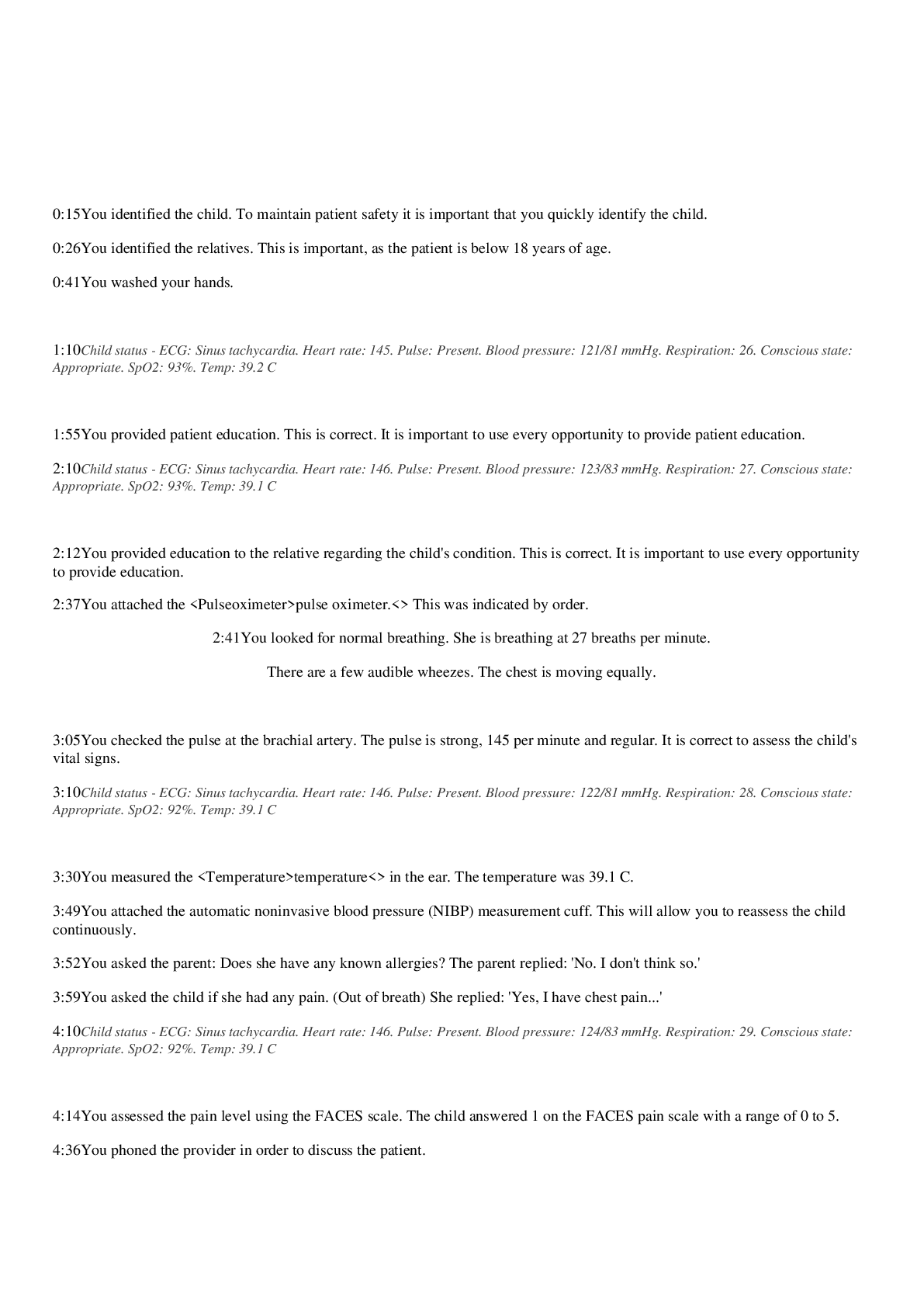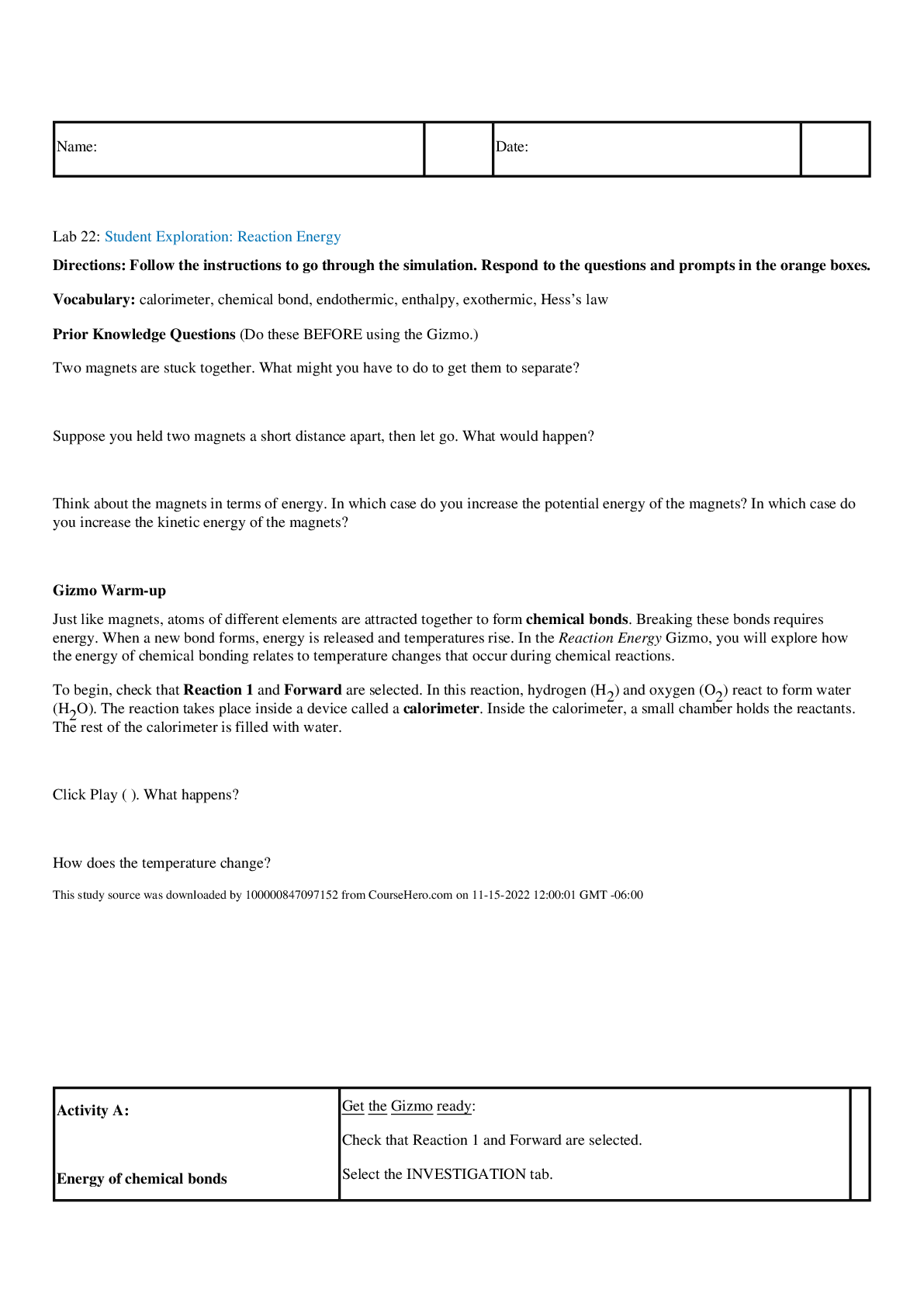Pharmacology > QUESTIONS & ANSWERS > NURS 6521 Week 10 Advanced_Pharm_Week_10_Quiz (All)
NURS 6521 Week 10 Advanced_Pharm_Week_10_Quiz
Document Content and Description Below
A nurse is discussing with a 58-year-old male patient the causes of 1 out of 1 points erectile dysfunction in men over 50 years of age. Which of the following will the nurse inform the p... atient is the primary physical cause of erectile dysfunction of men in this age group? Response Feedback : Vascular disease is the most common physical cause of erectile dysfunction. Atherosclerosis of the penile artery is the primary cause of erectile dysfunction in more than half of men over age 50. Men with diabetes are more prone to erectile dysfunction because of a combination of vascular disease and neuropathy. A decrease in testosterone levels is not a common cause of erectile dysfunction. Emotional stress is not a physical factor. • Question 2 A patient has acquired primary hypogonadism and has been prescribed testosterone transdermal (Androderm) patches. When educating the patient on how to administer the drug, the nurse will instruct him to 1 out of 1 points Response Feedback: The patient should place the patch on the back, abdomen, upper arms, or thighs. He should not place it on the scrotum or on bony areas such as the shoulder or the hip. The skin area should not be oily, damaged, or irritated. The patch should stay in place for 7 days before replacement. • Question 3 1 out of 1 points A 59-year-old man with a recent history of erectile dysfunction has been assessed and prescribed sildenafil (Viagra). When providing patient education to this man, the nurse should tell him which of the following? Response Feedback : Adverse effects associated with sildenafil include facial flushing and headache. The drug is not taken on a daily basis in the morning, but rather 1 hour before anticipated sexual activity. Medication interactions exist, and should be assessed for, but it is not necessary to avoid any and all prescription medications. Heart palpitations and dizziness should be reported to the patient's care provider. • Question 4 A man has a demonstrated history of androgen deficiency and the consequences of this health problem include an inability to maintain an erection. Which of the following medications would best address this 1 out of 1 points patient's erectile dysfunction (ED)? Response Feedback: Testosterone is used in treating erectile dysfunction and male climacteric symptoms when these conditions are secondary to androgen deficiency. PDE5 inhibitors do not address ED secondary to androgen deficiency. Tamsulosin is used to treat BPH. • Question 5 A male patient is experiencing climacteric symptoms secondary to androgen deficiency. His physician has prescribed testosterone. The nursing assessment reveals that the patient has had a myocardial infarction. The combination of testosterone therapy and a history of myocardial infarction would place that patient at a significantly higher risk of 1 out of 1 points Response Feedback : A patient who has had a myocardial infarction and is prescribed testosterone is at a significantly higher risk for hypercholesterolemia. Patients taking testosterone are also at increased risk for prostate cancer and acute urethral obstruction; however, these risks are less significant. Gynecomastia is simply a side effect of the drug. • Question 6 A patient is receiving radiotherapy for an overactive thyroid gland and asks whether her milk is safe for her baby. If her treatment cannot be discontinued, what should the nurse recommend? 1 out of 1 points Response Feedback : A breast-feeding woman who is receiving any radioactive compounds should pump her breasts during the time that breast milk is radioactive and discard the milk into a biohazard container designed for radioactive materials. Breast-feeding can resume when the drug is stopped and the breast milk contains no radioactivity. It is not the role of the nurse to recommend alternative medication. • Question 7 1 out of 1 points A woman who is in the second trimester of her first pregnancy has been experiencing frequent headaches and has sought advice from her nurse practitioner about safe treatment options. What analgesic can the nurse most safely recommend? Response Feedback: Acetaminophen is the analgesic of choice during pregnancy. • Question 8 1 out of 1 points A nurse is working with a 16-year-old pregnant teen and assessing for behavior that may put the baby at risk. The most important assessment the nurse can make is Response Feedback: Adolescents are prone to experimentation with various substances, both legal and nonlegal; assessments related to this phenomenon are important during pregnancy. Insurance coverage, exercise, and dietary habits are considered less important. • Question 9 A 20-year-old woman has been prescribed estrogen. As with all women 1 out of 1 points taking estrogen, the nurse will carefully monitor the patient for which of the following? Response Feedback : Women taking estrogen are at an increased risk of cardiovascular complications, along with ovarian and breast cancer. Early epiphyseal closure is a condition the nurse would watch for in a prepubescent girl who takes estrogen. Diminished libido and lack of secondary sexual characteristics are not identified adverse effects of estrogen. • Question 10 1 out of 1 points A 73-year-old woman has osteoporosis and is prescribed alendronate. She takes calcium and vitamin D supplements, drinks lots of water, and has just quit smoking. The nurse should advise the patient to also Response Feedback : The patient should be encouraged to exercise and lift light weights as often as she can to increase bone density. It is also important to have adequate amounts of vitamin C in her diet, but it would not be directly related to this therapy. Drinking at least 6 to 8 oz of milk daily is a good idea, but she is already taking a calcium and vitamin D supplement. There is no identified adverse relationship between artificial sweeteners and alendronate therapy. • Question 11 A male patient is taking finasteride for BPH. Which of the following will the nurse evaluate at each clinic visit? 1 out of 1 points Response Feedback: It is important to assess the patient's urinary patterns in order to gauge a therapeutic effect. Changes in serum cholesterol levels, bone growth, and hemoglobin levels are not associated with finasteride therapy. • Question 12 1 out of 1 points A woman is receiving [Show More]
Last updated: 2 years ago
Preview 1 out of 38 pages
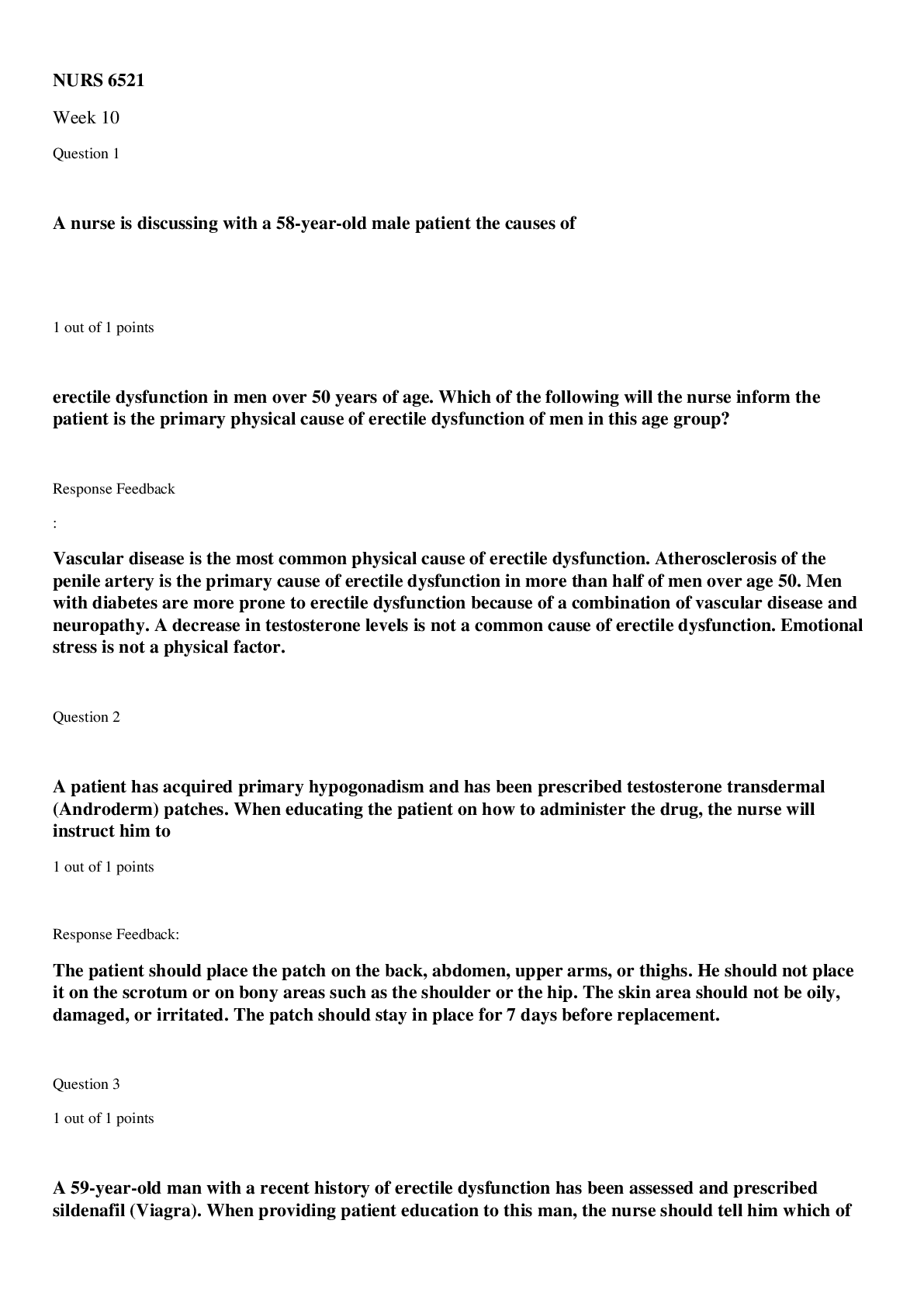
Buy this document to get the full access instantly
Instant Download Access after purchase
Buy NowInstant download
We Accept:

Reviews( 0 )
$13.00
Can't find what you want? Try our AI powered Search
Document information
Connected school, study & course
About the document
Uploaded On
Mar 12, 2023
Number of pages
38
Written in
Additional information
This document has been written for:
Uploaded
Mar 12, 2023
Downloads
0
Views
40


 Respiratory Care Practice Exam Gary Persing, TMC Questions And Answers Plus Rationale.png)


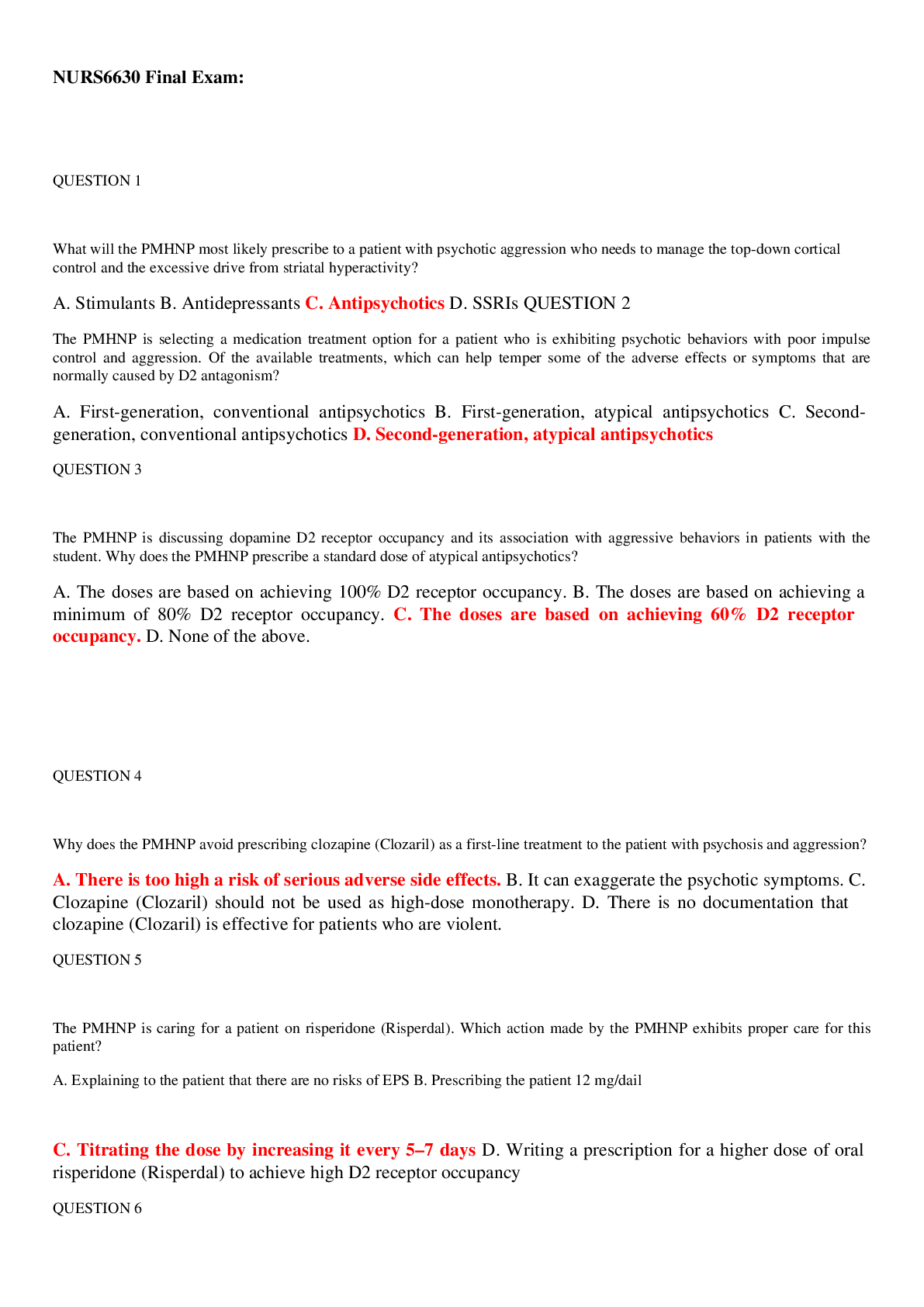
 TEST with Answers.png)



